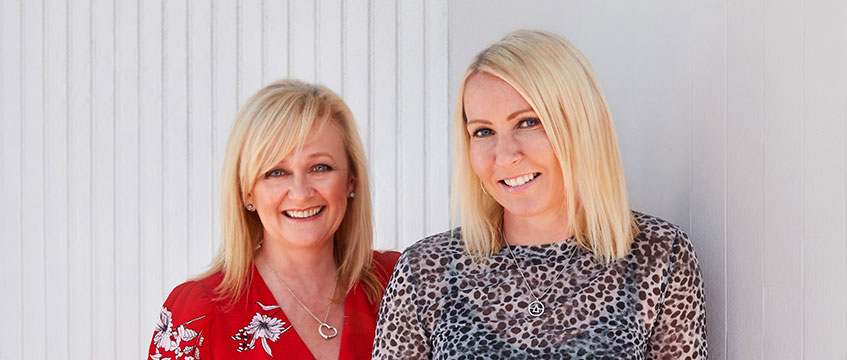The high street isn’t dying, say the founders of UK fashion brand Sosandar – and to show their belief, while some companies are scaling back their bricks-and-mortar presence, the eight-year-old company is moving in the other direction, having opened its first physical shops this year.
Launched in 2016 by co-founders Ali Hall and Julie Lavington, Sosandar was created to fill a gap in the women’s fashion market for the 30-plus age group. It sells clothes through its own website, but also through retailers including Freemans, JD Williams, Next and Marks & Spencer. Some 60% of its sales come from third-party shops, and the company is now setting its sights on its own stores. It has opened in the Metrocentre in Gateshead, as well as in Chelmsford in Essex and Marlow in Buckinghamshire. A fourth shop is set to open soon in Landsec’s St David’s shopping centre in Cardiff.
For Sosandar, the expansion isn’t just about brand visibility, but serving customers in the way they prefer. “Sixty percent of fashion purchases are made in stores,” Hall tells EG. “We know that our customers want to shop both online and in-store. It’s not one or the other.”
Across the UK’s major towns and cities, there is a noticeable recovery in footfall and occupier demand, approaching pre-pandemic levels in prime areas. While other brands shutter stores, Sosandar believes the high street is bouncing back, particularly in well-chosen, affluent areas. “The high street is not dead,” says Hall. “In fact, it’s thriving in certain areas where competition for space is fierce. It’s really about picking the right locations.”
A good fit
Sosandar’s approach to selecting store locations focuses on high-traffic, affluent high streets where the retailer’s customer base is strong. “We are looking for main shopping streets with high footfall, not side streets,” Lavington says. “Our customers want convenience and a seamless shopping experience.”
The company is averaging around 1,500 sq ft of trading space at its sites, typically on the ground floor. However, it is open to operating in larger spaces depending on the location. The brand has identified some 50 potential locations across the UK, on high streets and in shopping centres, and the co-founders are in discussion with landlords but stressed that the company is in no hurry to settle for second-tier deals. “We won’t open just anywhere,” Hall says. “We are focused on finding the right spots, even if it means waiting.”
The search for the “right spots” is tough – vacancy rates are falling in many retail real estate portfolios. NewRiver REIT’s 2024 annual report stated that the retail occupancy market “is in its best position in at least five years”, adding: “The true value of the physical store has been demonstrated with omnichannel retailers continuing to win online market share from the pure-play operators.” NewRiver’s own 2024 occupancy rate of 98% is its highest on record. At British Land, which has spent more than £680m on retail parks this year, occupancy rates for such assets stand at 99%.
Investment in central London retail rose by almost 40% in the first six months of 2024, according to figures from CBRE. And fashion retailers are leading retail leasing activity across Europe, accounting for nearly a third of the 900 deals in the first half of 2024, according to Cushman & Wakefield.

Bricks and clicks
The company’s dual focus on online and physical retail reflects the team’s understanding of changing consumer behaviour. Fashion brands are exploring new store concepts, providing multiple touchpoints for customers to engage with their products.
Sosandar’s stores are designed to stand out, with custom fixtures and floor-to-ceiling video screens showcasing its product lines and bringing the company’s digital strengths into the physical space.
“We video every item of clothing and use those videos in-store to help customers visualise how the items look when worn,” says Lavington. “The feel of the stores is like nothing else you would see on the high street.”
While Sosandar is focused on expansion, the company remains prepared for the real estate challenges ahead, including around securing prime spaces, managing supply chains and scaling its operations. But the co-founders remain optimistic and are confident in their product and brand strategy. “The key to success is knowing your customers and delivering what they want,” says Lavington.
In a trading update this week, the company said it was lowering its full-year revenue target but maintaining its goal for profit of £1m owing to improved margins. The performance of the first three shops is “tracking in line with our expectations”, the company said, with increased traffic to the website in areas where the stores are located – proof that bricks and clicks can work together even now.

Photos: portraits © Sosandar
Fashion shot © Sosandar, courtesy of Aver
Chelmsford store © EG
Send feedback to Shifali Gorka
Follow Estates Gazette











